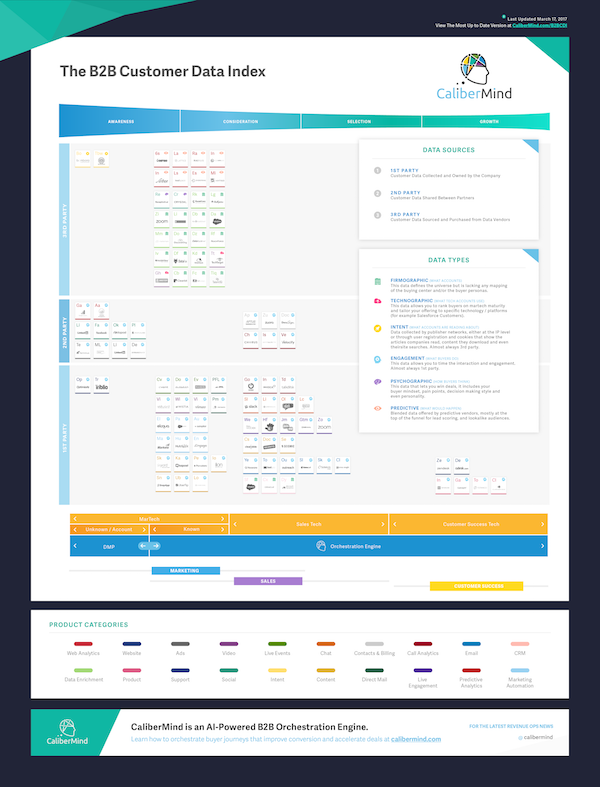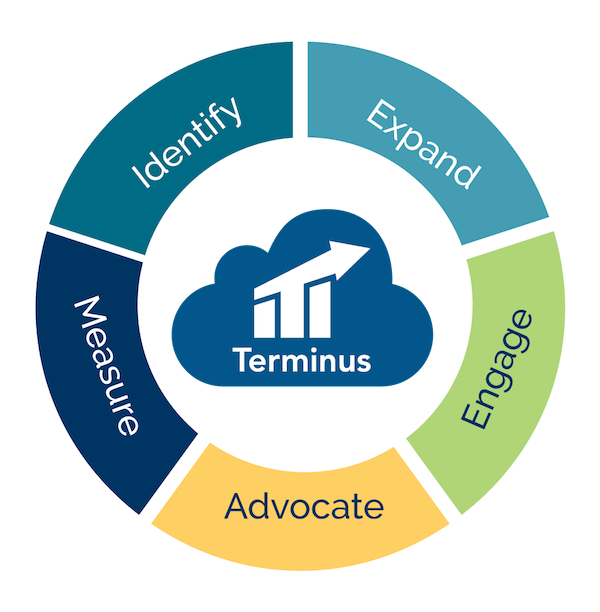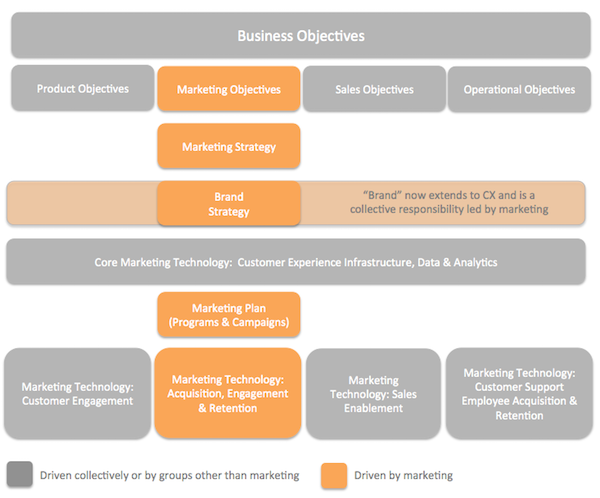This article is a guest post by Raviv Turner of CaliberMind. It was entered into The Hackies essay contest for the upcoming MarTech conference. Like it? You can register your vote in the contest by sharing it on social media, especially LinkedIn, Facebook, and Twitter.
A lot has changed in the B2B buying process over the years. What used to generally be a straightforward problem-solution-benefit sale has evolved into a complex, multi-phase, multi-channel engagement. And to keep up with the consumer-like approach to buying many businesses have adopted, companies are collectively sinking billions of dollars into advanced technologies, methodologies, and content in hopes of gaining an edge.
Yet, despite their best attempts, numerous studies suggest that this current approach isn’t having the desired impact for the majority of companies employing it.
The B2B buying process is broken. Not just merely disconnected, but dropped a vase and shattered into a million pieces B-R-O-K-E-N. The reason why, though, may not be what you’d expect. For years the emphasis in the B2B market has been on sales acceleration — moving prospects ever faster through the sales and marketing funnel, and the funnel mistakenly being seen as the buying journey.
The underlying premise is that prospects will buy from your company if they just know about you first. So, you shell out for a suite of new marketing tools, hire the smartest content experts, and flood the web with a cadence of content to generate awareness, drip campaigns to nurture prospects, and customer evidence materials to seal the deal.
And then it happens. Your traffic doesn’t spike like you’d hoped, you generate fewer qualified leads than you’d projected, and your sales figures miss their targets. If you’re the average B2B vendor, you’ve spent upwards of 28% of your budget on marketing and sales collateral, only to have as much as 70% of it go unused, not distributed, and unread.
Months of strategy, planning, and execution go down the drain… but why? Easy: The Holy Grail of funnel marketing — steering prospects effortlessly through the awareness, consideration, and purchase phases — is misguided because the buying process is hardly linear.
Sales acceleration isn’t actually a problem, buying acceleration is. And it’s really hard to solve a problem when you’re looking at the wrong one.
Buying behavior and profiles have changed
Ask around and you’re unlikely to find a single salesperson that would turn away a purchase order on the very first call, saying, “I haven’t gone through my sales process yet. We have to go through the right steps as fast as we possibly can.” Indeed, first-call orders are increasingly rare, as studies show that buying processes are actually getting longer and more complex for a number of reasons.
Just like technology, people evolve. Individual preferences, loyalties, and demands all change over time and affect how they evaluate new products and services. However, B2B buying has also changed at the organizational level, as the number of people involved in purchasing decisions has climbed from an average of 5.4 stakeholders two years ago to 6.8 today and now includes stakeholders from an array of roles, functions, and geographies not present in decisions of the past.
As these buyer groups move through their buying journey, they’ll experience a range of obstacles or objections that can slow them down or derail the process entirely. Usually those issues are internal challenges like competing agendas. Sometimes it’s because they’re sorting through a dizzying number of alternative solutions, which takes a lot of time and manpower. But most often it’s the process itself, as decentralized decision making often leads to questions about next steps, achieving consensus, and finalizing an outcome.
This shift in buying behavior has created an entirely new set of challenges for sales, marketing, and customer success teams to address a multitude of possible buying philosophies. In fact, Walker Sands has reported that almost 50% of marketers have built best-of-breed marketing technology stacks because they value the power and potential of multiple technologies to arrive at an ideal experience that maps to what they believe is the buyer journey. At the same time, Signal Research Group found that the stacks comprise, on average, 17 disconnected, underutilized tools in an effort to cover as many functions — and buyer journey variables — as possible.
The real problem, of course, is that these stacks are flawed from the start because they’re constructed from the vendor’s point of view, rather than from the customer’s perspective. That difference in perspective leads to a massive disconnect between the experience a vendor wants and the one the buying team expects. The result is a ton of wasted time and energy spent throwing good money after bad and hoping you get lucky.
Luck isn’t a strategy
To accelerate B2B buying, marketers need to have more than just a CRM, marketing automation, and web analytics. Beyond basic technology, buying acceleration also requires answering a number of tough questions that we never asked before like: how do we help our buyers accelerate their buying process, teach them how to buy, or help them align the interests and priorities within their own organization?
Aside from the internal organizational challenges, the larger problem is the vast amounts of data available to decision makers and the disjointed nature of it sources. In a world where 57% of the buying journey happens before buyers are directly engaged with vendors, data is the key to unlocking what buyers tell us about themselves, their relationships to our company, and their engagement with our products.
But any old data won’t do. As much as 80 percent of customer behavior data is unstructured data, made up of information from sales calls, emails and social media feeds. So if you’re relying on data residing in CRM systems that were never built to track buying signals, gaining perspective and making good decisions from your data, you’ll be missing a vast majority of the most insightful information available.
The only way we can effectively help our buyers get better at buying is by aggregating, analyzing, and mobilizing the right data. Smart uses of B2B customer data in marketing, sales and even customer success can take many forms — revenue modeling, account-based-marketing, audience segmentation and personalization, and even multichannel optimization and churn prediction.
These functions used to be custom-built by IT and data scientists, but today they’re easily accessible through journey orchestration platforms, which can also be a smart alternative to using multiple data vendors. These integrated platforms can organize customer data silos, inform next steps, and then coordinate buyer journeys by recommending the appropriate next actions.
But with so many powerful tools on the market, it can be difficult to determine which will be the most valuable sources of data and how your company can leverage it to improve sales and marketing outcomes. So, to help, we’ve created The B2B Customer Data Index to serve as a guiding framework for B2B marketing, sales and customer success teams looking to take a more holistic approach to building a truly customer-centric marketing and sales technology stack.
If you’re thinking of adding another point tool to your stack or buying data from another data vendor, this index will be a helpful guide in avoiding the disjointed approach most companies take regarding customer interactions to build the most efficient, effective, and customer-centric stack possible.
About The B2B Customer Data Index
Given the vastness and diversity of today’s marketing and sales tech market, the index only includes a sampling of the key players in the mid-market/enterprise space and is sorted based on the pillars of the B2B Customer Data framework.
Many companies in this table offer a wide range of solutions and services, but to demonstrate how each technology adds to the disjointed nature of customer data, we categorized them based on primary customer data type.
We have organized the B2B Customer Data into categories, doing our best to place each company into the most relevant group. We hope that our categories provide a good taxonomy for the ongoing evolution of the market and we invite data partners and product vendors to join us and help ensure accurate information.
1. Technology:
- Marketing Tech
- Sales Tech
- Customer Success Tech
2. Data Sources:
- 1st Party – customer data collected and owned by the company
- 2nd Party – customer data shared between vendors (for example content syndication data)
- 3rd Party – customer data sourced and purchased from data vendors
3. Data Types:
- Firmographic (what accounts) — this data defines the universe but is lacking any mapping of the buying center and/ or the buyer personas.
- Technographic (what tech buyers use) — this data allows you to rank buyers on tech maturity and tailor your offering to specific technology/ platforms (for example Salesforce customers).<./li>
- Intent (what accounts are reading about) — data collected by publisher networks, either at the IP level or through user registration and cookies. Data from these sites could show the articles companies read, content they download and even their site searches. Almost always 3rd party.
- Engagement (what buyers do or say) — this data allows you to time and tailor the interaction and engagement. Almost always 1st party from marketing automation, content and video platforms, sales call analytics, etc.
- Psychographic (how buyers think) — this data lets you win deals, it includes your buyer mindset, pain points, decision-making style, and even personality.
- Predictive (what would happen) — blended data offered by predictive vendors, mostly at the top of the funnel for lead scoring, and lookalike audiences.
Changing with the times
As B2B buying behavior continues to evolve, businesses must also adapt and make it easier for their buyers to buy. CRMs, marketing automation, and a multitude of predictive analytics platforms have created a tremendous opportunity to understand more about who’s buying from your company than ever before. But without the right data — and the right systems bringing it all together — even your best efforts are unlikely to succeed. Gathering the right data requires building a tech stack aligned not just with your business needs, but also with the demands and behaviors of your target customers.
We hope that our categories provide a good taxonomy for the ongoing evolution of the market and welcome any feedback or suggestions for the next iteration of the index.
What did you think of this article as an entry in The Hackies essay contest for the upcoming MarTech conference? If you liked it, you can register your vote in the contest by sharing it on LinkedIn, Facebook, and Twitter.
Have a marketing/technology/management “hack” that you want to share with the world? Consider entering The Hackies yourself — we’d love to learn from your experience and insight!





You listed some data categories in your post. How else would segment marketing and sales technologies?
Well stated, but have to wonder if the Buying Process is broken or is it more likely the case that the response by B2B vendors is broken? B2B buyers will continue to evolve and grow more sophisticated in their approach. It is B2B vendors who must pick up the pieces of their broken strategy and better align (as you state here).
Here’s what I see are the big markers as to what’s broken. 1. The tech is incredibly sub-optimal, doesn’t smoothly integrate, thus marketing teams sink countless resources into workarounds (more bandaid tech, or hacking stuff together). 2. The Insights engine – what data do we need in what format to be able to optimise the journey – this indeed is broken and I love what CaliberMind is doing here 3. The People. None of this solves for the broken offline behaviours – how are Product/Marketing/Sales/Success strategising their work, and optimising along the way to feed the digital infrastructure?